In the Yunling Mountains at an altitude of 2,500 to 5,000 meters in the Hengduan Mountains on the southern edge of the Himalayas, there live the most precious primates in the world - Yunnan golden monkeys. They are national first-level protected wild animals and are known as the "snow" Domain Elf". As a national treasure as famous as the giant panda, the Yunnan golden monkey has a fashionable hairstyle with a pointed black crest on its head and "flaming red lips". It is so special!
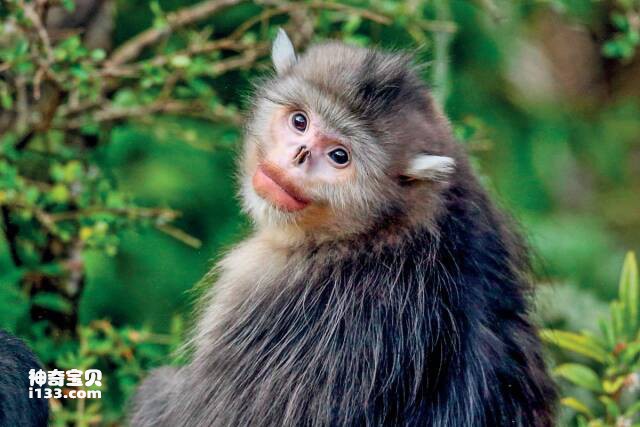
There are currently 5 species of golden monkeys in the world, namely the Yunnan golden monkey, the Guizhou golden monkey, the Sichuan golden monkey, the Burmese golden monkey and the Vietnamese golden monkey. At present, there are only 13 natural populations of Yunnan golden monkeys, less than 3,000 individuals.
Among the monkeys, the Yunnan snub-nosed monkey is also a star in the world of obese people. Regardless of whether they are "men or women", they all have fat bellies and round waists, and they look as if they are pregnant. But this is not to blame for the Yunnan golden monkey’s lack of exercise. Their big bellies are mainly because they feed on lichens, buds and leaves of broad-leaved trees, and bamboo shoots, but these foods have relatively low nutritional value. In order to ensure that they obtain enough energy and nutrients, the Yunnan snub-nosed monkeys must eat constantly, and their stomachs may become full. She is good-looking, but even if she is fat, she looks like a star.
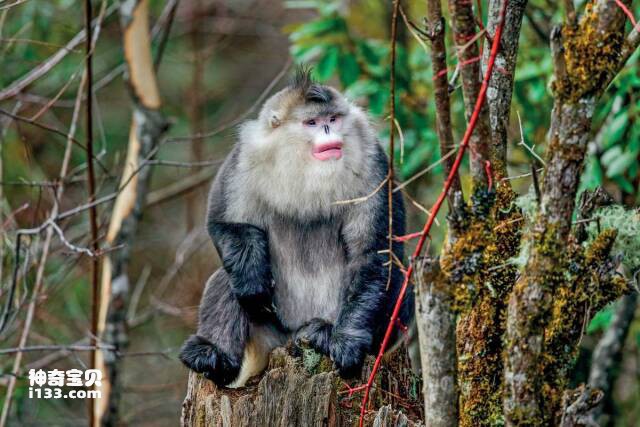
Yunnan golden monkeys are so rare and on the verge of extinction. In addition to hunting damage, another important reason is that habitat destruction leads to food shortages. Now let’s talk about their feeding habits.
In the habitat of Yunnan snub-nosed monkeys, tree species such as Abies ferreana, Abies delavayi, Quercus semecarpifolia, and Betula utilis mainly grow. Lichens often grow on these tall trees. , moss, etc.
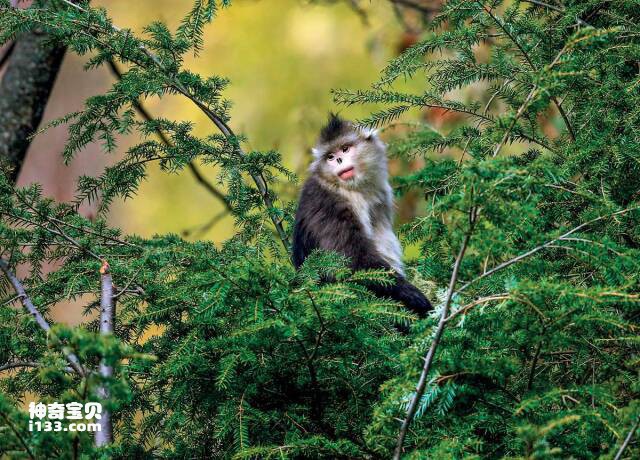
According to research, in addition to eating the young leaves, flowers, fruits and seeds of these plants, Yunnan golden monkeys eat about 60% of their food sources from lichens. Investigations have shown that the lichens they feed on include Usnea longissima, Lobaria yunnanensis, and more than a dozen species (among them, Yunnan golden monkeys eating lobaria yunnanensis is indeed a new thing, and has not been reported in any previous reports. Mentioned, the photos provided here are also first-hand accounts). Especially in winter when the mountains are closed by heavy snow, lichen is the only food for Yunnan golden monkeys.
The distribution areas of these two species of lichens are mainly concentrated in Deqin, Weixi, Lijiang, Jianchuan, Zhongdian and Kangding in Tibet. This is basically consistent with the current distribution of Yunnan golden monkeys. It can be speculated that the distribution areas of these lichen species eaten by Yunnan golden monkeys should be closely related to the migration paths of Yunnan golden monkeys. According to historical records, the Yunnan golden monkeys in ancient China had a wide distribution area. Now due to the impact of human activities, the habitat vegetation has been destroyed. In order to make a living, they have gradually retreated to the corner of the border between Yunnan and Tibet.
Speaking of lichen, we have to explore this magical creature in detail. Everyone should be curious about what delicious food it is, and it is favored by the Yunnan golden monkey. In fact, it also has the same twists and turns as the Yunnan golden monkey.
There must be many people who mistakenly think that lichens are "moss", and no wonder, this has historical origins. As early as 1753, Linnaeus, the founder of taxonomy, published a Flora Species. He classified lichens as a genus with mosses and algae. Together, they are placed in the order Algae of the plant kingdom.
For a long time, people regarded lichens as single green plants. The Swedish doctor Acharius, known as the father of lichens, discovered many new species of lichens and established many new genera of lichens in the early 17th century, but at that time he did not understand what lichens were.
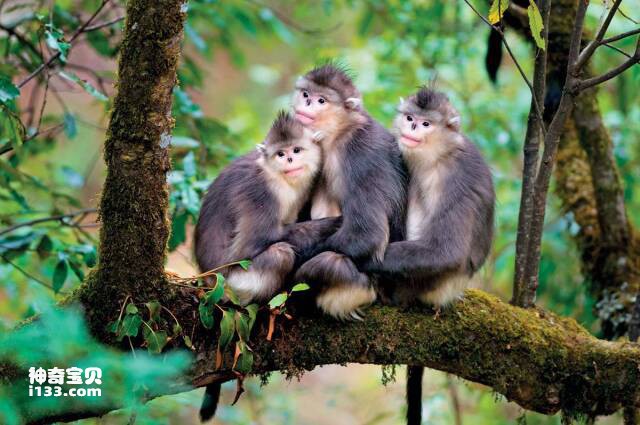
It was not until 1867 that a German scientist Schwendener revealed the duality of lichens, that is, lichens are symbionts composed of fungi and algae, rather than a single green plant. This is a major leap forward in human understanding of lichens. The fungi in lichen bodies are closely related to the algae. The algae provide food for the fungi, and the fungi protect the algae. The two form an entity. Once separated, they cannot thrive in nature, just like inseparable lovers. Therefore, scientists have always regarded the symbiosis of bacteria and algae in lichens as a model of mutualistic symbiosis.
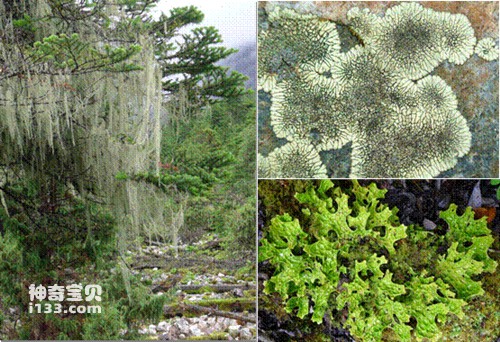
Branched lichens, scaly lichens and leafy lichens
The lichens created by nature are diverse and colorful. There are brightly colored crust-like lichens that grow on stones, scaly lichens that grow on the surface of the soil, and leaf-like and branch-like lichens that grow on the bark of trees. The lung lichens eaten by the Yunnan snub-nosed monkeys are leaf-like lichens, and the usnea are branch-like lichens.
Lichens are small in nature, but they are known as "environmental indicator organisms". This is because lichen is very sensitive to environmental pollution and its growth is very slow. Once it faces environmental damage, it will mean a basically non-renewable crisis.
It can not only provide food for some animals such as Yunnan golden monkeys, but also plays an important role in plant population succession. The lichenic acid produced by lichens during the growth process can cause the substrate to be eroded and weathered. Through the accumulation of wind dust and the invasion of other microorganisms, it gradually changes the ecological environment on the surface of the substrate, creating the most basic foundation for mosses, ferns and other higher plants. growth conditions. Therefore, lichens also have the reputation of "pioneer organisms on land".
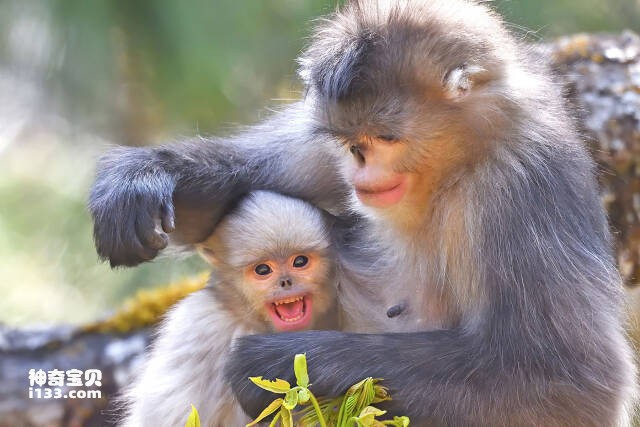
In addition, lichens have also made many contributions to human beings. They are not only widely used in daily chemical spices, antibiotic raw materials and traditional clothing dyes, but also have a long history of traditional medicinal use in China. There are records in ancient books and other documents. There are nearly 100 species of Chinese medicinal lichens recorded in modern works such as "Chinese Medicinal Lichens" and "Chinese Medicinal Spore Plants". There are more than 80 species of folk edible and medicinal lichens in Yunnan. In Yunnan, the Yunnan snub-nosed monkeys like to eat usnea and lung robes, which are also collected and eaten by people. They are delicacies.
Like the Yunnan golden monkey, lichens also face the most dangerous and terrifying human destruction. With deforestation and the expansion of cities and industry, some lichen species are on the verge of extinction. As lichen resources decrease, like the Yunnan snub-nosed monkeys, many animals that feed on lichens will also face a lack of food. This will not only force them to migrate their habitats, but also cause their populations to change due to lack of food. , and ultimately have an impact on the entire ecological diversity. Therefore, reasonable protection of natural resources such as lichens is a top priority.
The Yunnan golden monkey is the primate with the highest distribution in the world besides humans. It is also the most beautiful and noble monkey in the world. Lichens are the fulcrum for maintaining ecological balance and the colorful clothes that protect the earth. Today, they are being ruthlessly destroyed, and their home is also our home. This secret garden of nature requires the joint efforts of all of us to protect and manage it.
animal tags:
We created this article in conjunction with AI technology, then made sure it was fact-checked and edited by a Animals Top editor.